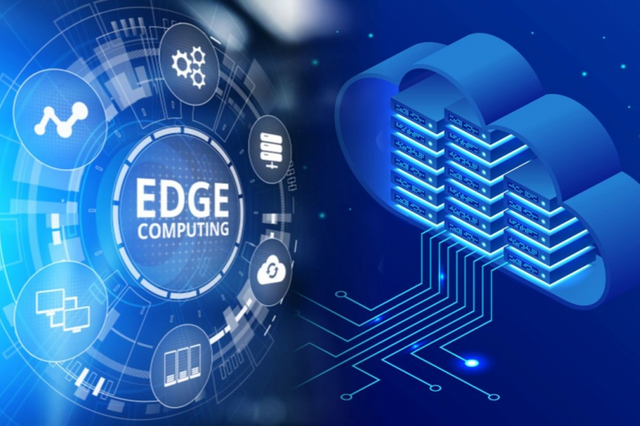How Edge Computing Enhances Renewable Energy Performance

Renewable energy is the future, but challenges like fluctuating supply and grid stability can limit its efficiency. This is where edge computing transforms the game. Processing data instantly at the source reduces delays, improves decision-making, and enhances energy distribution.
Furthermore, it strengthens cybersecurity, optimizes energy consumption, and ensures seamless integration with smart grids. As a result, renewable energy systems become more reliable, efficient, and adaptable.
Edge computing can make solar farms, wind turbines, and off-grid solutions operate smarter than ever. Adopting this technology is key to maximizing renewable energy’s potential for a sustainable future.
1. Real-Time Data Processing for Improved Speed of Action
Edge computing allows data to be processed in real time at the point where renewable energy is generated. Traditional edge-to-cloud computing architectures transmit sensitive data collected from edge devices for processing and analysis on centralized servers, creating latency. With edge computing, data is processed where it is collected, meaning decisions can be made instantly.
For example, a smart wind farm outfitted with connected edge devices that quickly process AI algorithms can constantly assess wind speed and direction.
Still, wondering what is edge computing? Let me explain. It is a technology that processes data on-site, reducing delays and enabling real-time decision-making. Wind turbines can immediately readjust to maximize energy production if wind conditions are no longer favorable.
2. Predictive Maintenance Increases Equipment Longevity
Whether solar panels or wind turbines, renewable energy equipment needs maintenance and regular inspection. Failures not foreseen by maintenance plans may result in both energy losses and expensive repairs. Edge computing allows real-time predictive maintenance tracking equipment to spot and fix problems before serious issues occur.
For example, sensors gather and analyze vibration and temperature data on wind turbines. Edge computing technologies let operators analyze this data on-site, cutting through the noise and detecting early signs of mechanical wear. This enables maintenance teams to catch issues before they become major problems, minimizing downtime and prolonging the life of their equipment.
3. Lower Latency for Speedier Energy Delivery
Latency remains a critical factor in renewable energy management. Sending sensitive data to the cloud for processing can introduce latency that makes dynamic decision-making most difficult and inefficient, and energy must be dispatched in real-time. Edge computing solves this issue by processing data in a local or regional environment during the organization’s critical path, minimizing latency.
For example, a solar farm equipped with edge computing could immediately ramp up energy production or remove available capacity from the grid if cloud cover reduces production capability. This forms the foundation of a clean energy economy and ensures that their operations provide a consistent electricity supply to the grid. As a result, this avoids power outages.
4. Cybersecurity Resiliency for Renewable Energy Infrastructure
Renewable energy infrastructure is widely acknowledged as a valuable cyber vulnerability and offers opportunities to disrupt renewable energy generation and export networks. Edge computing improves security, too, by minimizing the need to send sensitive data across the internet. Since data is managed and analyzed on-site, it reduces the risk of an attack on a centralized server associated with a cloud service.
Edge devices use AI-based and other anomaly detection types to spot and proactively prevent intrusions to offset security threats. For example, if it detects an attempt at unauthorized access, the system might immediately isolate the attacked network segment.
5. Maximized Energy Use through AI-Driven Efficiency
Our energy consumption patterns are not the same in the early morning as they are at midnight. With edge computing, energy consumption can be more efficiently optimized by predicting short-term demand and adjusting supply in real-time.
Here are five ways edge computing helps reduce energy use:
AI-powered edge systems help predict the energy demand and adjust energy generation and consumption accordingly.
Edge devices can contribute to the real-time balancing of power supply and demand by cutting energy usage during peaks and shifting demand to off-peak hours.
Localized processing identifies and reduces energy waste.
Edge computing can manage electric vehicle charging schedules to keep the grid from being overwhelmed.
AI-powered systems can optimize electricity pricing by changing hourly rates as supply and demand fluctuate.
These optimizations even help make sure renewable energy is used efficiently, cutting down on waste and improving sustainability.
6. Providing Accelerated Off-Grid Renewable Energy Solutions
Edge computing deepens our understanding of off-grid renewable energy systems, like remote solar farms or microgrids deployed in rural or underserved communities. As we know, these places often lack stable and high-quality internet connections; edge computing helps energy systems run autonomously without needing connectivity to the cloud.
In action, a remote village powered by a solar microgrid could use edge computing to optimize its energy distribution in real-time, right on the local grid. The system can track how much energy is used and how much energy is needed and balance the two to avoid overloads. This provides a cleaner, more affordable, and more dependable energy supply for populations that live in decentralized, off-grid areas.
With this, you might have understood “what is edge computing.”
Final Thoughts
Edge computing is changing the renewable energy landscape through improved operational efficiency, reliability, and security. By making real-time data processing more possible, helping with grid stability, and optimizing overall energy life cycles, edge computing helps renewable energy systems thrive in this new world.
Edge computing is becoming an essential element of sustainable energy’s future by improving latency, boosting cybersecurity, and supporting off-grid use cases. As we all work to expand the adoption of renewable energy, incorporating edge computing will be key to harnessing it, making the most of it all, and ushering in a more efficient, stable, smart energy future.